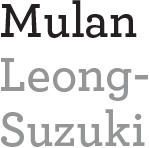Made in Human: Literal Objectification
My thesis for my Visual Critical Studies degree. These ideas manifested as both an essay and symposium presentation, produced after a year of researching, writing and editing. Below is the abstract for the written essay and the symposium presentation.
Abstract:
The constant use of the term “objectification” has made audiences numb to its implications. This thesis questions multi-layered relationships with objectification, specifically through “literal objectification”, or the transformation of human bodies into objects. In these cases, these bodies and body parts are harvested, mutilated, or transformed into literal objects such as textiles, books, or chandeliers. This blurs the roles of human and object, blending personhood and objecthood, giving a human the power and purpose of an object, as well as bestowing an object with the authority of a human. I will explore how this transformation seems to amplify already existing concepts in the realm of objectification while expressing my own personal experiences with the topic. Notions such as consumption, choice, and visibility are discussed in relation to Literal objectification. These are explored through cases including the use of Auschwitz victims’ hair to fuel Nazi Germany’s textile industry; books made from skin, particularly the case of the British man, William Burke, in regards to Literal objectification as punishment; and the Sedlec Ossuary, and how death can permit objectification.
